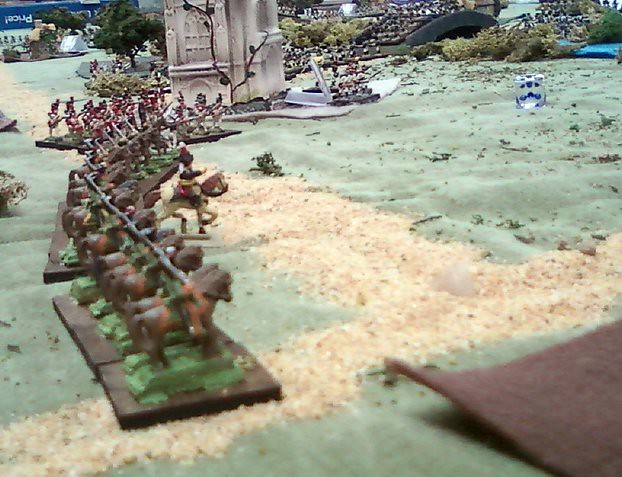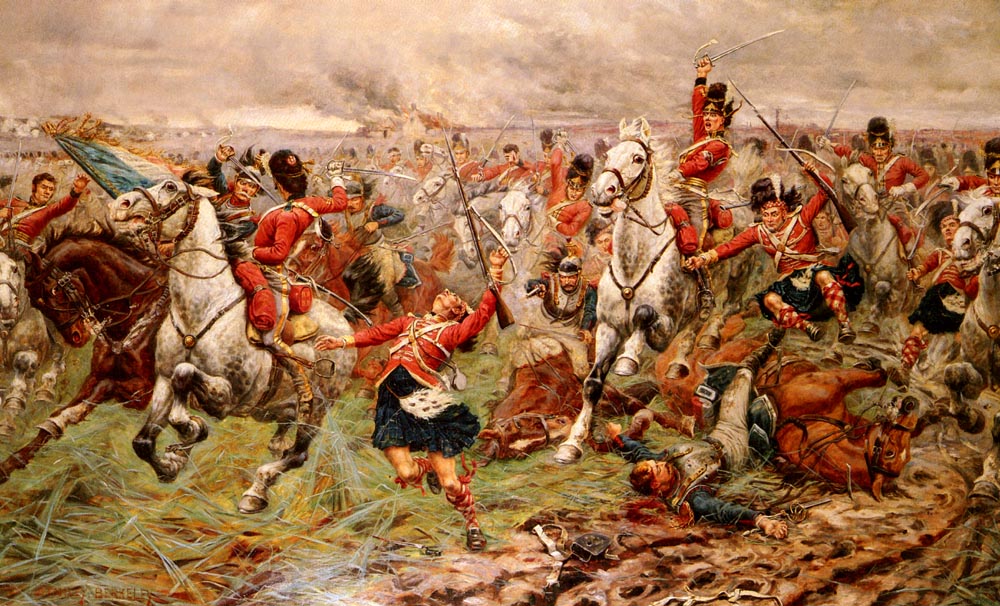Before starting, let me state two things.
1. I know that the C&C series, even when it uses blocks (like Ancients, and the upcoming Napoleonics) isn't a traditional Block game (like the gems from Columbia and other companies). But in some fora it is considered to be part of the block games universe, just because of the physical implementation of the pieces (being, well, "wooden blocks").
2. Even if you accept C&C:Ancients as a Block Game, then this article may prove to be a bit off because it is not an overview, replay, or review of the game. Rather it is analysis of one piece of the game.
Okay, what is this article about? In brief I will try to compare the various odds of causing a casualty within the different implementations of the C&C system that we have access to, today (that is, October 2010).
Okay, first lets identify our quarry. The C&C system has, as constituent games (each implementing the system somewhat differently):
Battle Cry! (from Avalon Hill)
Memoir '44 (from Days of Wonder)
BattleLore (from Fantasy Flight Games)
C&C: Ancients (from GMT)
C&C: Napoleonics (due out from GMT)
In each case, there is a dice spread that is rolled (on situationally varied numbers of dice). The symbols of the dice then give you the results of that combat round (dead or retreating units, usually).
But each one does it different.
The oldest game in the series is Battle Cry! It has dice with the following faces:
- Infantry
- Infantry
- Cavalry
- Artillery
- Flag
- Wildcard
The three types of units in the game are: Infantry, Cavalry, and Artillery. The other pieces involved are Generals.
Infantry (killed on Infantry and Wildcard symbols) - 3/6 or 1/2 per dice
Cavalry (killed on Cavalry and Wildcard symbols) - 2/6 or 1/3 per dice
Artillery (killed on Artillery and Wildcard symbols) - 2/6 or 1/3 per dice
Generals (killed only on the Wildcard symbol) - 1/6 per dice
(by the way, here is a picture of the New 150th Anniversary edition of Battle Cry coming next year)
The next game in the series to come out is Memoir 44 - the excellent game of WWII combat. It has dice with the following faces:
- Infantry
- Infantry
- Armor
- Star
- Flag
- Grenade
The three types of pieces in the game are Infantry, Armor and Artillery. There are lots of modifiers to the basic types, but that type determines which dice faces cause kills.
Infantry (killed on Infantry and Grenade) - 3/6 or 1/2 per dice
Armor (killed on Armor and Grenade) - 2/6 or 1/3 per dice
Artillery (killed only on Grenade) - 1/6 per dice
This brings us to BattleLore - the great game of Medieval and Fantasy combat in the series. This is a great game, originally from Days of Wonder, but later on (currently) from Fantasy Flight games. Terrific scenarios (although I really like the historical scenarios that popped up on the Days of Wonder support website, before they were taken away with the move to Fantasy Flight), and lots of cool published supplements. The dice in this game have the following symbols:
- Red Shield
- Blue Shield
- Green Shield
- Sword/Shield
- Flag
- Lore
In this game all the many unit types are all given a quality color, called the Banner Color (Red, Blue or Green). Each of those units is killed on their respective dice faces (red units are killed by a red shield).
In addition, the Sword/Shield marker works like the Grenade marker from Memoir 44 (i.e. it kills all units), however there are specific times when it works and when it doesn't (based on the Weapon being used by the unit attacking). It does pretty well for almost all the hand-to-hand weapons, and half as well for missile weapons (some it just doesn't work for, like the common or short bow, as well as the cavalry reflex bow and the slingshot). Some target types get to ignore the sword/shield hits form some weapon types (i.e. - knights).
The most popular, so far, in the series has been the GMT offering, Commands and Colors: Ancients. This is the first time the series name has been used (except on some of the Memoir 44 game literature - but it is never referred to as "Commands and Colors: WWII").
The dice here are similar to those in Battlelore.
- Red Shield
- Blue Shield
- Green Shield
- Sword/Shield
- Flag
- General
The results are similar as well, with colored units taking hits from corresponding dice. Rather than weapons affecting the extra dice side, it is determined by unit type (of which there are a lot - light infantry, auxillia, medium infantry, barbarian infantry, heavy infantry and so on. For instance, light infantry never hit on the Sword symbol. Some units are immune to some hits (i.e. - heavy infantry and heavy cavalry).
Okay, the last game of the set - Battles of Westeros. Fantasy Flight Games put out this lovely boardgame about the battles of the George R. R. Martin fantasy novels, the Game of Thrones. It is based on the Richard Borg system, however there are some modifications. Chief amongst those are two - first, the command cards are not based on different sectors of the battlefield (unlike all of the other games in the series , so far). Second, the dice are eight sided. This is because of this dice spread:
- Red Shield
- Blue Shield
- Blue Shield
- Green Shield
- Green Shield
- Green Shield
- Valor
- Flag
Okay, so with this spread we have interesting results - first Green units are killed 3/8 of the time. Blue units 1/4 of the time and Red units 1/8 of the time. That makes Red units very strong, in my opinion, but I have yet to play the game (I am only judging this by what is in the rulebook, and from my understanding of the dice odds). Also, unlike some of the other games, there is no wildcard symbol in this version. Interesting.

Okay, so where does all this take us. First - I think the most tactical of the games are BattleLore and Ancients. I suspect that the upcoming Napoleonics release (which I have pre-ordered and which is due next month) should also be quite high-granularity in its tactical details. But most importantly, in the games where there is little in qualitative difference among the troop types (i.e. - Memoir 44 and Battle Cry) there is a big difference in the odds of basic types (like infantry) vs. the stronger types (cavalry, armor, etc) being killed. Fair enough - without the differences of different grades (or weapons, etc) you have to introduce some tactical difference.... Now, I have to see Westeros to see where the interesting bit is there, I suspect it may be amongst the different leaders and their abilities, but it is not in my clutches yet!

Okay, so that is what I have to say on dice. Curious that in some the difference in odds is driven mainly by attacker difference, and in some others the difference in odds is driven mainly by defender differences. In all cases, the dice pool size being rolled is a function of attacker type. Regardless they all play somewhat different because of these variations, and that is what makes the whole series appealing, rather than just one or two of the titles.
Tags:
boardgames



















































